I’ve built a few boats using traditional methods, and they would all look just like boats from over a century ago if not for the bright white synthetic rope I’ve used for halyards, sheets, and painters. Manila cordage would have been used on those earlier boats, but that natural fiber isn’t as readily available, strong, or affordable as today’s ropes made of nylon or polyester. Unmanila, a three-strand rope made of tan-colored polypropylene, is a good match for traditional boats, but it’s not to be found in local hardware stores or even marine suppliers.
A few months ago, I saw a beautifully appointed Caledonia Yawl, rigged with what I thought was Unmanila. I asked the builder, Mark Bratton, about it and he said the running rigging was ordinary white nylon three-strand that he had dyed a lovely café-au-lait hue. Nat Wilson, a Maine-based master sailmaker specializing in sails for traditional ships, had told Mark how to dye synthetic rope, and Mark passed the technique along to me.
The dye Nat and Mark have used is Cabot’s Salt Marsh water-based exterior stain. When I began looking for it on the web, I was quickly bewildered by the variations. Stains come in transparent, semi-transparent, semi-solid, and solid, indoor and outdoor, water-based, and oil-based; and in off-the-shelf colors or tinted at the store.
Looking for an easier path to follow, I tried dying nylon rope with Rit fabric dye, the stuff I’d used in the 1960s to make tie-dyed T-shirts. It didn’t work at all well, even though I followed the instructions for nylon, getting the water up to 140 degrees and adding vinegar. The tan dye I’d bought turned the rope green (I might not have stirred it soon enough or thoroughly enough before putting the samples in) and didn’t color the five test samples to the same degree; one was merely tinged. I trudged back to the web to resume my search for stain.
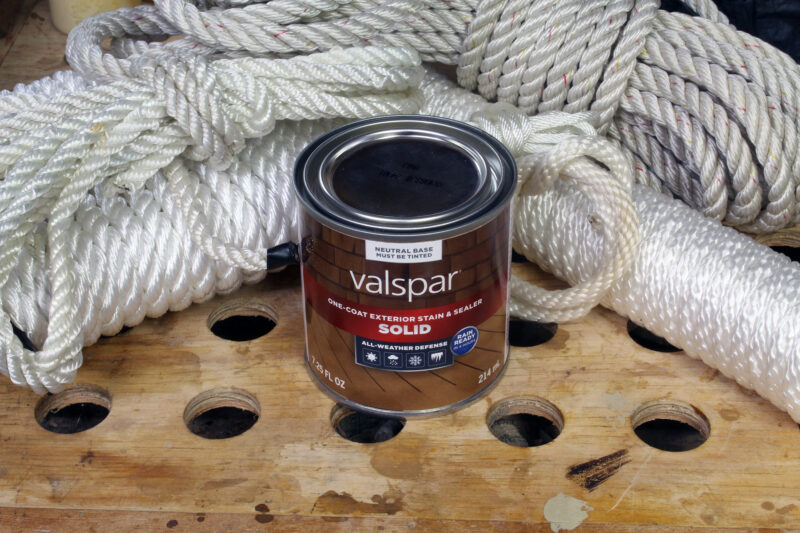 Photographs by the author
Photographs by the authorThere are many types of stain. Water-based exterior stain in solid or semi-solid is what to look for. My favorite is Valspar’s Solid One-Coat Exterior Stain & Sealer tinted Spicy Brown.
At Home Depot I bought a quart of Behr Premium Fast-Drying Water-Based Wood Stain in Golden Oak. I diluted as directed by Mark’s instructions, and it worked beautifully, giving all the test samples a rich color. It was only afterward that I noticed, in small type on the back of the can, that it was for interior use. My boats are stored under cover, out of the sunlight and rain, so the stained cordage isn’t likely to fade. But it wasn’t what I was aiming for.
Lowe’s, the other local big-box home-improvement store, has Cabot’s One-Coat Exterior Stain and Sealer in four grades from transparent to solid. Each is a base for the color to be mixed in, and only the solid version is water-based. I also found a half-pint can of the Cabot’s solid stain in Salt Marsh. It’s a soft gray color that looks good on Mark’s boat, but not what I envisioned for my boats. I did buy a small can of Cabot’s Salt Marsh in oil-based semi-transparent. It took to the rope well, but I much preferred working with the water-based stain. Nylon is not degraded by mineral spirits—the bristles of many paintbrushes are nylon. The mineral spirits solvent used to dilute the stain is slower to dry and has a strong odor.
Lowe’s also carries a line of stains from Valspar. Their One-Coat Exterior Stain & Sealer are all water-based, have UV protection, and come in three formulas: Transparent, Semi-transparent, and Solid. I bought a half-pint can of the Solid and had it tinted Spicy Brown, a coconut-shell hue that I thought would look right. On the color chart at the store, it was a bit darker than what I hoped to achieve, but I knew it would be lighter when applied to rope. It didn’t take long to dye the samples, and it was right on target for color and ease of application.
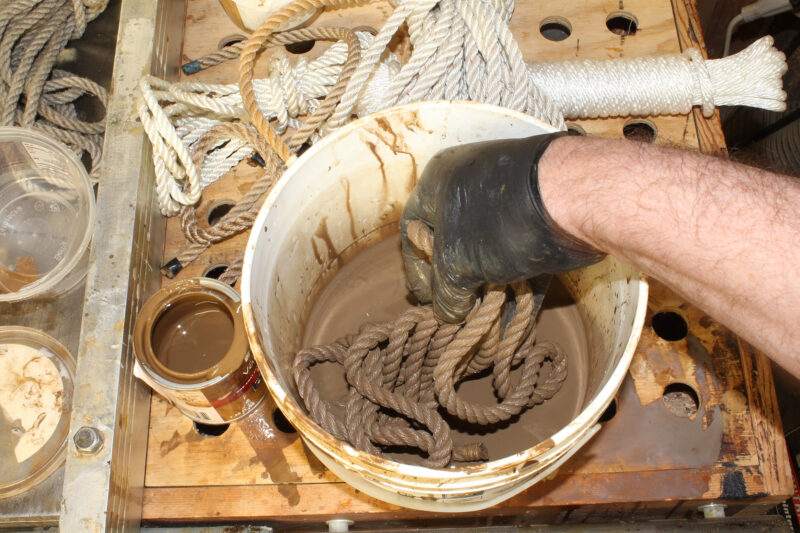
About 16 ounces of the diluted Spicy Brown solid stain in a small bucket doesn’t cover the rope but mixing it by hand saturates the fibers.
Here’s how to give ordinary white nylon rope or cord, braided or laid, some appealing color:
•Buy a half-pint can of water-based stain in either solid or semi-solid. When diluted you’ll have a quart to work with.
•In a plastic bucket that you don’t mind getting stained, dilute one part stain with three parts water. Stir well.
•Drop the rope, loose, into the bucket. Wear rubber gloves and keep the rope moving for 1 or 2 minutes.
•Fish one end of the rope out of the bucket.
•Pull the rope through a closed gloved hand to squeegee out excess stain, letting it drip back into the bucket.
•Hold a rag around one end and pull the rope through to wipe off any remaining stain.
•Flake the rope on a sheet of plastic to dry.
•Let the rope dry thoroughly.
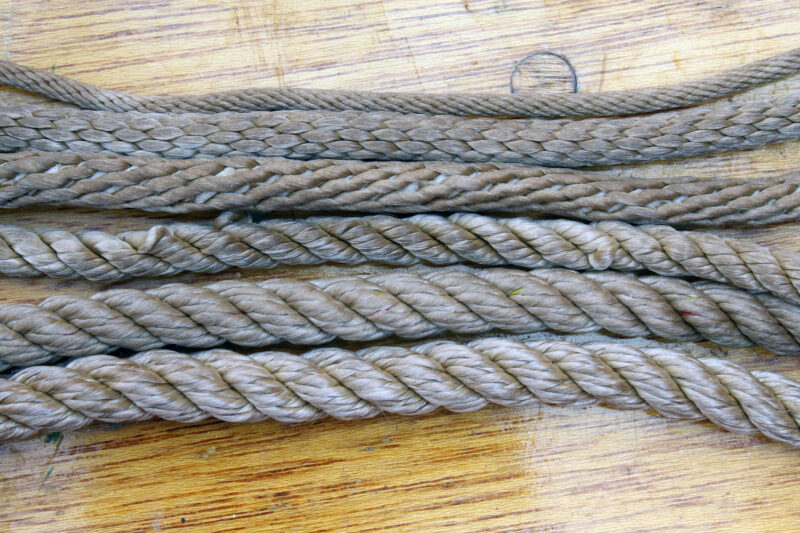
The Valspar solid water-based stain worked well and had consistent color across the nylon samples from 1⁄8″ braided to 3⁄8″three-strand twisted rope.
The stain penetrates the rope well, but if you’ll do any splicing, it should precede the staining.
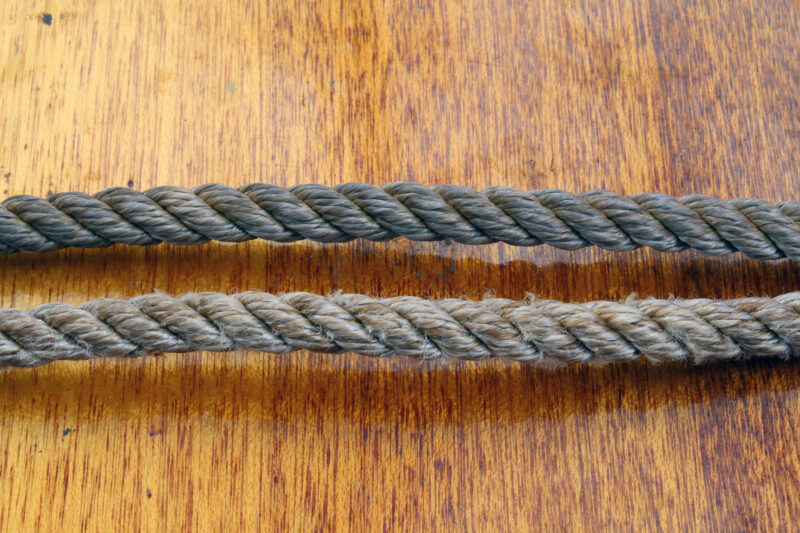
A quick sanding on the stained rope (above) will sever some of the fibers to give the rope (below) an old-time look.
Another touch that will make new nylon laid rope look even more like old-time manila, is to sand it with 150-grit sandpaper to cut some of the outside fibers. I don’t think it would significantly reduce the strength of the rope. The sanding will create uniform tufts of fiber and make the rope look a bit like a caterpillar. A going-over with a heat gun will give the fibers a random look, more like an old rope.
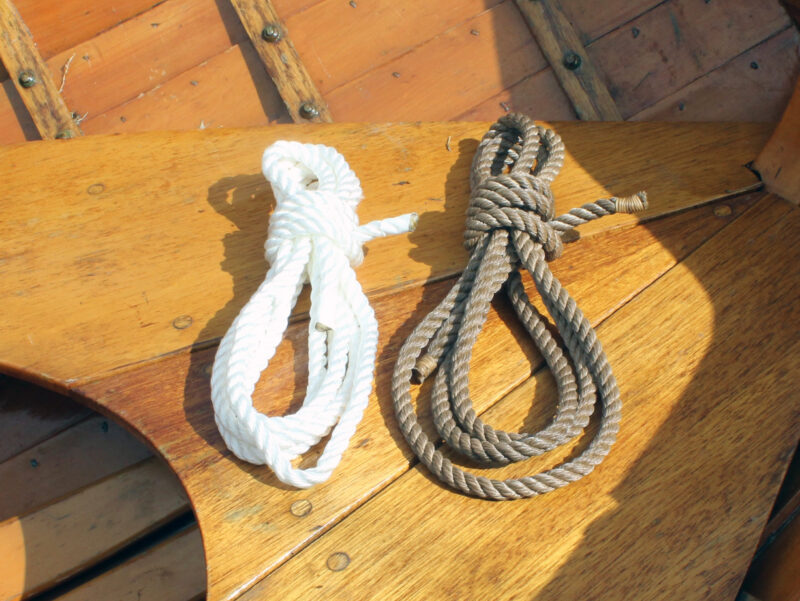
This new 3⁄8″ nylon rope was annoyingly bright in sunlight. Stained, it is much more pleasing to look at.
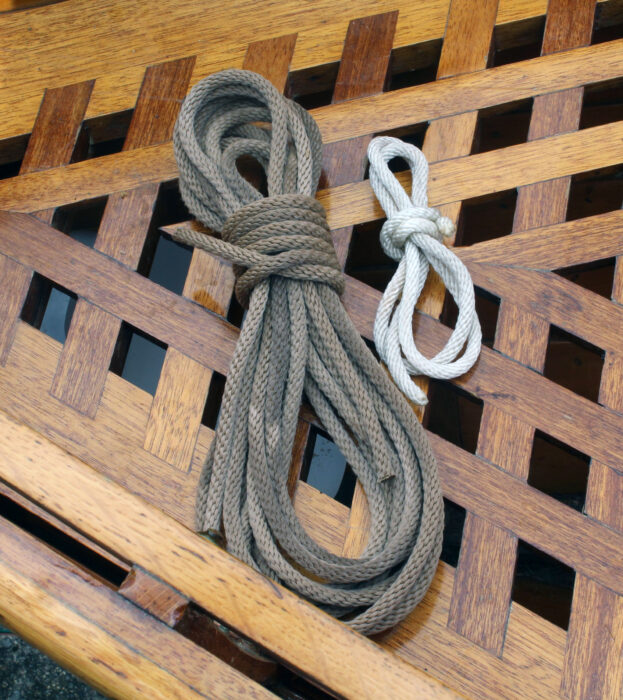
Braided nylon cord was introduced in World War II, so it’s not a good match for boats designed in the 19th century, but it is useful nonetheless. The length that I stained had been in use for years and was likely contaminated with substances that resulted in some irregularities in the color.
None of this, of course, serves any practical purpose, but if you’ve built a wooden boat and appreciate the beauty of traditional construction and brightwork, giving the rigging the right look is worth doing and hardly any trouble at all.![]()
Christopher Cunningham is editor of Small Boats.
You can share your tips and tricks of the trade with other Small Boats readers by sending us an email.
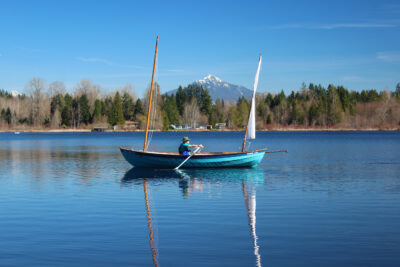
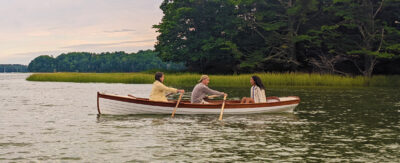

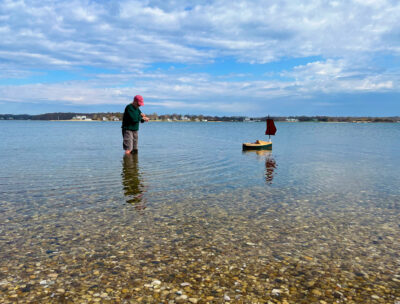
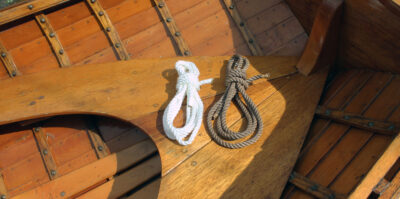
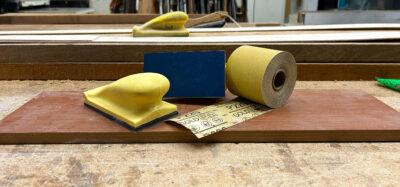

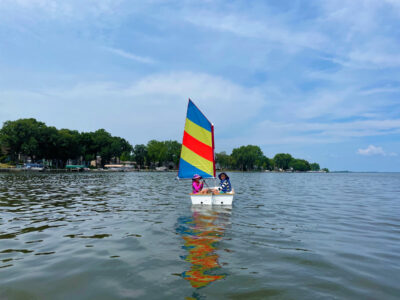
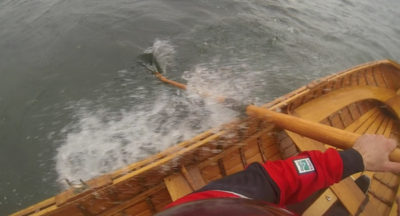
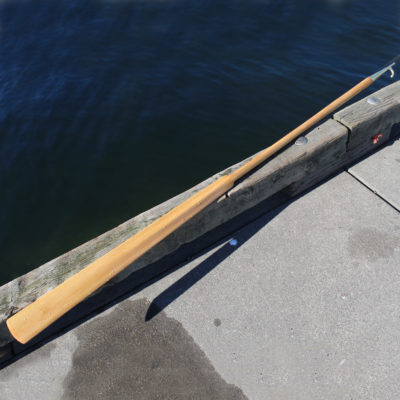
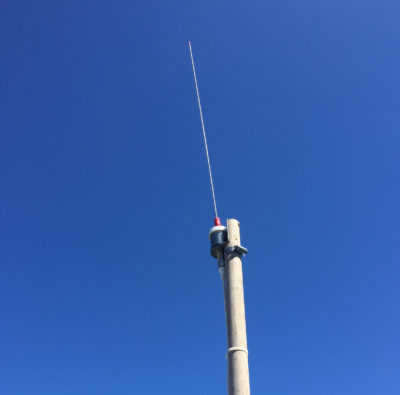
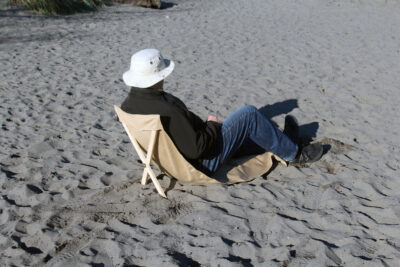
Chris I missed it the first time I read this, but I would like to correct one thing my running rigging is all spun polyester. Anchor and dock lines are nylon. I really like the color you chose and the sanding adds another layer of realism.
What a grand idea! Thank you.
I’ll try right away to color some rope of my schooner, nice solution!
Nice touch.
I’m on my way to pick up stain and a bucket! I have a mix of old line and new “bright white” lines on my traditional wood Whitehall. This is just what I needed to put those final touches on the boat before the Port Townsend Wooden Boat Festival this year!
Thanks!
Mark,
I stained some very old nylon ropes that had turned gray. That underlying color made the brown stain look almost black. I did that test on the tail ends of two lines and I was glad I didn’t stain the full lengths. I did tests on a lot 10″ samples of ropes before committing full lengths to the process.
Chris
Thanks for the heads up on dyeing old line! I’ll stick to the two lengths of “bright white” line I have in the shop. I’ve been holding back on using it because it just looks “wrong” in it’s off-the-spool color. I’ll have the Whitehall in the PT Wooden Boat Festival this year, so if you are out, you’ll be able to see how my dye job came out in person!
Mark,
I stained some very old nylon ropes that had turned gray. That underlying color made the brown stain look almost black. I did that test on the tail ends of two lines and I was glad I didn’t stain the full lengths. I did tests on a lot 10″ samples of ropes before committing full lengths to the process.
Chris
Chris,
There is at least one other way and this one is designed for this very purpose, very inexpensive, and completely customizable.
During my forays into skin-on-frame canoe building, I dyed the bright white ballistic nylon skin of all three my canoes with Jacquard Acid Dyes. You can see the process here at timestamp 4:18, and the finished boat later on. Jacquard makes about 50 colors, plenty in the natural spectrum. Jacquard claims the dyes are colorfast through repeated washings, but my boats were subsequently coated on the outside with urethane so I cannot comment on that; however the uncoated insides have stood up just fine.
What brand poly 3 strand do folks recommend?
Ken, I used New England ropes 3-strand spun polyester I bought from R&W. Inexpensive with a good feel.